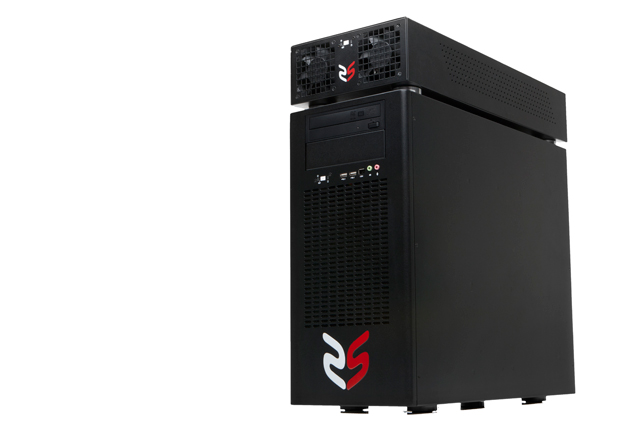Product designers heavily into design visualization don’t want their dual processor workstation to grind to a halt when rendering. Modelling productivity can be seriously hindered when all of your CPU cores are working flat out.

The RS-D2600 offers a solution to this common problem. It’s essentially a building block for distributed rendering, but unlike traditional rack mounted blades, the RS-D2600 doesn’t need its own cabinet or room. Instead it sits on a desk, still making a fair amount of noise when rendering flat out, but not in the same league as a blade.
WS reckons you can stack two of these deskside rendering systems on top of a workstation or have up to six free standing though you may want to hone your Jenga skills first using some less valuable bricks. These compact machines are packed with serious compute technology.
Each RS-D2600 features two six core Xeon processors and stacks of memory. There’s no need for a graphics card – the machine is typically controlled remotely from a desktop workstation – but a low-end card can be installed if required. It only needs a low capacity SSD for OS, applications and local data caching. Connectivity is achieved via ethernet, through a network hub.
Our test machine was configured with Backburner, the free distributed rendering software which comes with 3ds Max. We prepared our standard test render in 3ds Max Design on the single CPU WSX4 workstation, but instead of rendering locally we sent the job to network render.
From start to finish it took 187 secs, not as fast we would expect from a dual Xeon X5650 workstation, but this also included the time taken to open 3ds Max on the RS-D2600, load the job across the network and compute. We understand more modern render farm software can handle this process more efficiently.
But the RS-D2600 is not just about rendering speed; it’s about accelerating workflows. Product designers can stack up render jobs, then forget all about them as they carry on with their creative work on their powerful single CPU workstation. It’s an excellent fit for small design offices that don’t want to invest in blades, but still need a dedicated render resource which can grow as needs change.
Greg Corke
To view comparative benchmark scores from other workstations please click here
For details of all of our application-specific CAD/CAM/CAE benchmarks click here
Specifications
» 2 x Intel Xeon X5650 processors (2.66GHz) (Six Core)
» 24GB (6 x 4GB) 1333MHz REG ECC DDR-3 memory
» Workstation Specialists motherboard
» 120GB Intel 320 Series SSD drive
» Microsoft Windows 7 Professional 64-bit
» 36 months full parts and labour system warranty
Benchmarks
» CPU benchmarks (secs – smaller is better)
Rendering (3ds Max Design 2011) – 187
2 x Intel Xeon X5650 processors (2.66GHz) (Six Core)
24GB (6 x 4GB) 1333MHz REG ECC DDR-3 memory
NA
Workstation Specialists motherboard
120GB Intel 320 Series SSD drive
36 months full parts and labour system warranty
www.workstationspecialists.com






